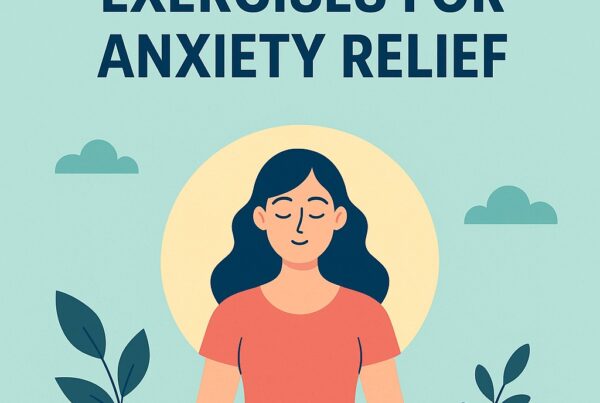Unlocking Success: A Guide to Effective Strategic Management Techniques
Are you looking to sharpen your organization’s competitive edge and navigate the complexities of today’s business world? Strategic management is the key to aligning your resources with long-term objectives and responding adeptly to the ever-changing market landscape. This guide provides actionable insights into strategic management – from setting a clear vision to executing a robust strategy. Get ready to explore how strategic management can transform your business operations for sustained success.
Key Takeaways
- Strategic management is essential for aligning an organization’s strengths and resources with market opportunities and threats through continuous planning, monitoring, and execution to reach defined goals.
- The strategic management process includes clear goal setting, in-depth environmental analysis, strategic plan formulation, execution, and consistent evaluation and adjustment based on performance outcomes, using tools like SWOT and balanced scorecards.
- Successful strategic management requires adapting the organizational culture to the strategy, efficiently managing resources and change, and learning from real-life examples to overcome challenges and maintain competitiveness.
Understanding Strategic Management

Acting as a navigational tool, strategic management directs an organization toward its intended destination. It’s an ongoing process in which strategic management involves strategic planning, analyzing, and executing strategies to attain the goals and objectives of an organization. Strategy formulation, a crucial aspect of this process, involves creating strategies that capitalize on the organization’s strengths to seize opportunities and address threats while managing internal weaknesses in alignment with the organization’s overarching objectives.
The compelling aspect of strategic management is its capability to:
- Transform a company’s vision into actionable steps
- Pave a roadmap to success
- Require meticulous planning, continuous monitoring, and adaptive execution
- Help a company enhance its competitiveness
- Align its resources and activities with its overarching objectives
Effectively implemented, a strategic management plan can help a company achieve its goals and drive success through strategic business management, making strategic management important.
Explore Your Strategic Potential:
Ready to elevate your strategic management skills? Contact me to discover how coaching can transform your approach and drive your business forward.
The Importance of Strategic Management
Strategic management is not just another buzzword in the corporate world; it’s a game-changer. It guarantees awareness of the strategic plan among all organizational members, promoting action alignment and improving multi-level decision-making. This alignment propels the organization towards its goals, like a well-oiled machine, where every gear is synchronized and working in harmony.
Beyond that, strategic management bolsters competitiveness by empowering organizations to navigate the competitive environment and:
- Foresee and instigate positive adaptations in the face of market dynamics
- Drive corporate growth by enabling the development and execution of efficient strategies
- Emphasize planning procedures
- Evaluate potential market expansion opportunities
This foresight is particularly crucial in today’s rapidly evolving business landscape, where those who adapt thrive.
Concisely, strategic management is a guiding light leading organizations towards sustainable growth and triumph, utilizing strategic management theory as its foundation.
Key Components of Strategic Management
Strategic management resembles building construction — necessitating a solid foundation, sturdy pillars, and a lucid blueprint. And just as a building requires meticulous planning and execution, so does strategic management. It comprises several key components, each of which plays a crucial role in the process.
Goal setting, which involves the definition of clear, quantifiable, and attainable objectives in alignment with the organization’s vision, forms the bedrock of strategic management. Next comes the environmental analysis, which identifies opportunities and threats within the external environment and assesses internal strengths and weaknesses. Strategy formulation follows, creating strategies that leverage the organization’s strengths to seize opportunities and address threats.
The execution phase, strategy implementation, is where resources are coordinated and deployed to realize the objectives. Finally, strategy evaluation confirms strategies’ efficacy and alignment with shifting internal and external situations, prompting necessary modifications when needed.
The Strategic Management Process: Step-by-Step

Commencing the journey of strategic management necessitates a sequential approach. It’s like assembling a puzzle; each piece must be correctly placed to reveal the final picture. The strategic management process is that puzzle, and each step is unique and contributes to the bigger picture of an organization’s success.
The strategic management process includes the following steps:
- Determining the direction and establishing precise goals for the organization
- Conducting environmental analysis to analyze internal and external factors that could influence the organization’s strategic plan
- Formulating a strategy based on the analysis conducted in the previous step
The subsequent action is plan execution, which includes implementing strategic actions devised in the previous stage.
Goal Setting and Vision Development
Every voyage commences with a destination in mind, similarly, in strategic management, this destination gets defined via goal setting and vision formulation. This step elucidates the organization’s purpose and establishes long-term objectives, forming the cornerstone of successful strategic management.
Realistic goals are rooted in practicality, hence the importance of factoring in resources during their formulation. This ensures that the set objectives are not just ambitious but also practical and achievable, bridging the gap between aspiration and actuality. Developing a vision further contributes to strategic management, providing a clear purpose for the organization, guiding strategy development, and establishing a framework for setting measurable goals and objectives.
Environmental Analysis

Once goals are set and a vision developed, environmental analysis follows in the strategic management process. This stage involves scrutinizing both internal and external factors that could potentially influence the organization’s ability to achieve its objectives.
Environmental analysis is like a SWOT analysis on a grander scale. It takes into account trends and high-level factors, identifies all internal and external factors, and utilizes various analytical tools to categorize changes and forces. Particular attention is given to internal factors such as:
- values
- mission
- objectives
- organizational structure
- culture
- management style
Simultaneously, a lens is cast on external factors such as:
- Technological changes
- Economic factors
- Political and legal factors
- Demographic shifts
- Threats from competition
- Government regulations
- Industry dynamics
Strategy Formulation
Upon completion of environmental analysis, strategy formulation ensues as the next phase of the strategic management process. This is where the rubber meets the road. Strategy formulation involves creating a strategic plan to analyze internal and external factors.
The process involves addressing critical strategic inquiries, such as how the organization will compete and its goals or objectives. It entails a series of steps that include value assessment, vision and mission formulation, strategy design, performance audit analysis, gap analysis, action plan, contingency planning, and implementation. Various tools and techniques, such as SWOT analysis, PESTLE analysis, 5-forces analysis, and critical question analysis, are used during this phase.
Strategy Implementation
Once the strategy is hatched, it’s time to spring into action. Strategy implementation is where the strategic plan is put into motion. This phase encompasses the pragmatic implementation of the formulated strategies, including resource allocation, timetable establishment, and undertaking essential actions to accomplish the organization’s objectives.
Effective resource allocation plays a crucial role in facilitating strategy implementation. Ensuring that the right resources are allocated to the right tasks at the right time enhances:
- Efficiency
- Minimizes the risk of overruns
- Maintains project profitability and timeliness
- Aligns resources with the strategic priorities of the organization.
Furthermore, the organizational structure impacts the execution of the organization’s strategy by establishing a coherent framework for decision-making and allocating the organization’s resources.
Strategy Evaluation and Adjustment
Concluding, yet certainly not least significant, in the strategic management process is evaluating and adjusting strategies. This phase is akin to taking the pulse of the strategy, ensuring its effectiveness and alignment with changing circumstances.
The balanced scorecard and strategy maps are crucial tools for measuring and controlling the implementation of a strategic plan. Furthermore, regular meetings between divisional and corporate management can effectively control the implementation and facilitate necessary adjustments. To evaluate a strategy effectively, it is essential to:
- Establish clear and measurable objectives
- Use pertinent and dependable indicators
- Implement a well-established monitoring and evaluation system
- Utilize metrics and KPIs to track progress toward objectives.
Unlock Success with Expert Guidance:
Are strategic challenges holding you back? Contact me for personalized coaching that targets your unique business needs and unlocks your path to success.
Tools and Techniques for Strategic Management
Much like a carpenter possessing a toolbox filled with diverse tools, strategic managers have their toolbox brimming with assorted tools and techniques aiding them in successfully maneuvering the strategic management process. When used correctly, these tools can enhance the effectiveness of the strategic management process and deliver a competitive edge.
The toolbox of strategic management includes several useful tools, such as SWOT analysis, balanced scorecard, and scenario planning. Each tool serves a unique purpose and provides a different perspective, thereby enabling a comprehensive and holistic approach to strategic management.
SWOT Analysis

The SWOT analysis stands as one of the most favoured tools in strategic management. This structured framework is used to identify an organization’s:
- Strengths
- Weaknesses
- Opportunities
- Threats
A SWOT analysis can guide strategic decision-making and enhance the effectiveness of the strategic management process by providing a clear snapshot of the organization’s internal and external environment.
A SWOT analysis is typically conducted by leaders from every department, with key employees and managers also participating. Each participant brings a unique perspective and insight, making the SWOT analysis a comprehensive and inclusive process that ensures all factors are considered and all voices are heard.
Balanced Scorecard
The balanced scorecard also forms a potent instrument in the strategic management kit. It is a performance management tool that measures an organization’s progress across the following perspectives:
- Financial
- Customer
- Internal
- Learning and growth
The balanced scorecard transforms strategic goals into a series of performance objectives that are assessed, supervised, and adjusted as needed to ensure the achievement of the strategic goals. It includes components such as:
- Objectives
- Measures or key performance indicators (KPIs)
- Targets
- Initiatives
This makes it a comprehensive tool that provides a balanced view of the organization’s performance.
Scenario Planning
Lastly, scenario planning is a method enabling organizations to:
- Investigate various potential future outcomes
- Identify potential outcomes
- Evaluate responses
- Manage both positive and negative impacts
The strategic management process helps decision-makers in their strategic planning process.
Scenario planning involves the following procedures:
- Selecting a timeframe
- Identifying driving forces
- Determining critical uncertainties
- Creating scenarios
- Assessing scenarios
- Revising the plan as necessary
This proactive approach prepares organizations for different possibilities, enabling them to adapt and thrive no matter the future.
Enhance Your Strategic Skills:
Take your strategic management to the next level. Let’s connect and explore how my coaching can refine your techniques and help you achieve your business goals.
Overcoming Challenges in Strategic Management
Despite the straightforward strategic management process, it carries its share of challenges. Organizations often face numerous obstacles in their strategic management journey, including:
- Inadequate goal setting
- Lack of alignment
- Difficulty in tracking progress
- Scarcity of resources
These challenges can make the strategic management process more complex and require careful planning and execution to overcome.
Nonetheless, these challenges are far from being unconquerable. By aligning organizational culture with strategic goals and adapting to change, organizations can navigate these hurdles and steer their ship toward success. Let’s delve deeper into these solutions.
Aligning Organizational Culture with Strategy
Culture forms the vital fluid of an organization. It shapes behaviour, influences decision-making, and, ultimately, drives performance. Therefore, aligning organizational culture with strategy is key to successful strategic management.
When an organization’s culture is in harmony with its strategic goals, it propels the entire organization towards these goals like a well-oiled machine. Comprehending organizational culture contributes to effective strategy development by promoting a collaborative environment, stimulating innovation, and guiding team members’ behaviours.
Aligning culture with strategy ensures that employees are motivated and engaged in achieving the organization’s goals.
Adapting to Change
In today’s swiftly evolving business environment, change remains the sole constant. Organizations must adapt to changing market conditions and evolving customer needs to stay competitive. This adaptation requires effective leadership that can motivate the team to accept change and communicate its rationale.
Change management supports strategic management by implementing a structured approach for managing organizational transitions and transformations. By continuously monitoring the market, being open to feedback, building strategic partnerships, and investing in employee development, organizations can adapt to change, anticipate future trends, and embrace change as an opportunity for growth.
Real-Life Examples of Successful Strategic Management

The real test lies in the tasting, and real-life instances serve as the most persuasive evidence in the domain of strategic management. Many organizations have successfully executed strategic management to drive growth, increase competitiveness, and achieve their goals.
By scrutinizing these success narratives, we can glean precious insights and practical teachings about the proficient application of strategic management. Let’s take a closer look at two such companies that have harnessed the power of strategic management to unlock success.
Case Study 1: Company A
Company A is a shining beacon of successful strategic management. Through a well-executed strategic management process, the company achieved significant growth and increased its market share, gaining a competitive advantage.
The company’s strategic management process involved:
- Meticulous goal setting
- Thorough environmental scanning and analysis
- Effective strategy formulation
- Efficient strategy implementation
- Continuous strategy evaluation
The success of the strategy was contingent on effective practice, and Company A demonstrated this to perfection. By setting clear goals, defining objectives, and utilizing strategic evaluation techniques such as gap analysis, SWOT analysis, and value chain analysis, Company A was able to assess and modify its strategy to sustain growth.
Case Study 2: Company B
Let’s shift our focus now to Company B, another representative of successful strategic management. It successfully adapted to changing market conditions and customer preferences by continuously evaluating and adjusting its strategic plan.
Company B’s business strategy and strategic plans were designed to delineate the company’s present state, outline the desired future state, and set the strategic direction for the upcoming years. Adapting to change was a key aspect of their strategy, and they achieved it by making significant adjustments to accommodate shifts in market conditions and customer behaviours.
This adaptability was further enhanced by:
- Establishing milestones and metrics to quantify progress
- Conducting comprehensive analyses of the strategy’s execution
- Maintaining responsiveness in light of changing market conditions and consumer demands.
Summary
If there is one takeaway from this exploration of strategic management, it is that strategic management is a key to unlocking success in any organization. From setting goals and formulating strategies to implementing plans and evaluating results, each step of the strategic management process plays a critical role in helping organizations achieve their goals.
But the journey of strategic management doesn’t end there. Tools like SWOT analysis, the balanced scorecard, and scenario planning further enhance the process while overcoming challenges through aligning organizational culture with strategy and adapting to change, ensuring resilience and longevity. As seen in the real-life examples of Company A and Company B, effective strategic management can lead to significant growth and increased competitiveness. No matter where your organization stands today, starting or refining your strategic management journey is never too late.
Achieve Strategic Excellence:
Are you looking to master the art of strategic management? I’m here to help. Contact me to learn how my coaching services can guide you to strategic excellence.
Frequently Asked Questions
What are the 5 stages of strategic management?
The five stages of strategic management are goal-setting, analysis, strategy formation, strategy implementation, and strategy monitoring. It is essential for everyone in the company to understand the strategy for the process to work effectively.
What is an example of strategic management?
An example of strategic management is when an electronics company plans to boost its sales by conducting a SWOT analysis to identify areas of improvement and then implementing the strategy across the organization to achieve optimum results. This process involves identifying goals, developing a plan, and executing it effectively.
Why strategic management is so important?
Strategic management is vital as it gives companies a competitive edge, promotes efficiency, and keeps them informed about competitors. It also motivates employees and enables businesses to assess, develop, deploy, and evaluate strategies, ultimately contributing to business growth.
What is the importance of SWOT analysis in strategic management?
SWOT analysis is important in strategic management as it guides decision-making, helps capitalize on strengths, addresses weaknesses, seizes opportunities, and mitigates risks in the organization.
How does a company align its organizational culture with its strategic goals?
A company can align its organizational culture with its strategic goals by shaping its corporate culture to drive the business strategy and ensuring that business goals are aligned with cultural values. This involves transcending traditional business conduct and making effective communication and aligned values central to its vision.
Transform Your Business Strategy:
Transform your business strategy with professional coaching. Get in touch to learn how I can help you align your strategic goals with your business vision.



